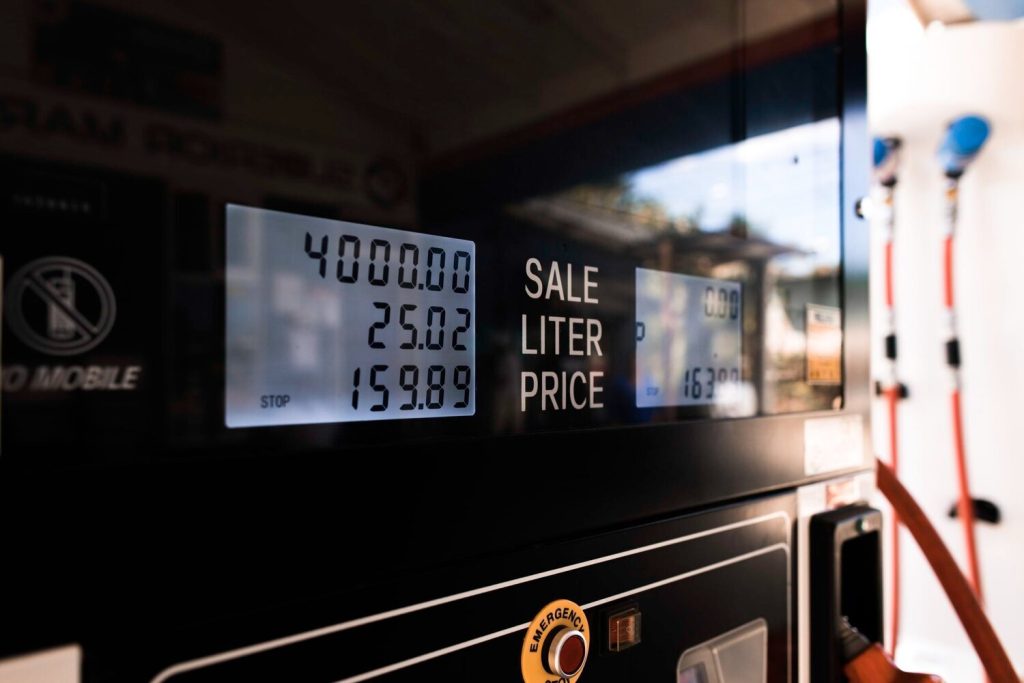Insights



The fate of Brazil’s petrol taxes, the key to Britain’s hydrogen agenda and the core of OPEC+
Policy preview: the fate of Brazil’s petrol taxes
“Brazil, Land of the Future and always will be!” Stefan Zweig
Brazil is not set to hold its next presidential election until October 2022, but the campaign is very much already in full swing with incumbent President Jair Bolsonaro, a right-wing firebrand, facing a stern challenge from former president and Workers’ Party (PT) leader Lula da Silva, a left-wing firebrand. The pair are all but certain to face one another in the second round (Brazil’s presidential elections include a run-off between the two most popular candidates if no one receives a majority in the first round). There are ample tales, told elsewhere, about both candidates’ alienation of the centre ground, but at this stage one can bank on one theme uniting them: changes to Brazil’s unpopular PIS/COFINS taxes.
The PIS/COFINS taxes are among the most important in the Americas, essentially serving as Brazil’s equivalent of a European-style value-added tax (VAT). As with all tax matters, they are actually significantly more complex, but distilled most simply the two duties amount to a 9.25% levy on the price of end-stage goods that is used to finance the country’s societal programmes and welfare system.
Both Lula and Bolsonaro are populists, and neither will campaign for a reduction of the programmes PIS/COFINS is used to finance. But Bolsonaro has already made clear that he desires to eliminate the applicability of the two taxes to fuel prices. Indeed, he unilaterally suspended the taxes on diesel for March and April and said that he would remove it from household gas bills. The suspension of the tax on diesel has been a demand of the country’s truck drivers strike movement, which brought much of Brazil to a halt in the months before the 2018 presidential election after oil prices were liberalised.
Lula is also likely to campaign on such a policy, though he has not formally announced it yet. During his first term as president, he passed and signed legislation making not just key food staples such as rice and beans exempt from PIS/COFINS, but also key agricultural inputs such as fertilisers and seeds. Lula must win back those voters who abandoned his PT following the corruption scandals under his successor, Dilma Rousseff, who was ultimately impeached and removed from office. Their defection to Bolsonaro put him over the top in 2018 and Lula knows winning them back will be key to his electoral hopes. Pledging to lift the PIS/COFINS taxes on all retail petrol sales may well be his play to do so.
Bolsonaro plugged the hole caused by his temporary suspension of the tax on petrol by raising bank taxes, something Lula himself would approve of were it not for the country’s highly polarised political environment. Fuel taxes may well be set to vanish from Brazil’s landscape, but what replaces them is unlikely to be preferable to most investors.

Dollars and sense: The key to Britain’s hydrogen agenda
“Water will one day be employed as fuel, that hydrogen and oxygen which constitute it, used singly or together, will furnish an inexhaustible source of heat and light, of an intensity of which coal is not capable.”
Jules Verne
With the UN Climate Change Conference that the UK is set to host, better known as COP26, beginning on 1 November, speculation is rising as to how UK Prime Minister Boris Johnson aims to set the stage. The conference offers the opportunity to turn the page on the Brexit debate and the COVID-19 pandemic, with a new launchpad for the government’s agenda of ‘levelling up’ the north and laying out a framework for how the economy can grow robustly while making the progress necessary to make the target of net-zero emissions by 2050 feasible.
If the Ministry of Business, Energy and Industrial Strategy (BEIS) is to be believed, hydrogen will be at the fore of the UK’s push into the new green economy.
On 8 April, BEIS Secretary of State Kwasi Kwarteng announced a partnership between Norway’s Equinor and Britain’s SSE to explore building a hydrogen-powered power station at a cluster of new sites – known as the Humber Renewable Energy Super Cluster Enterprise Zone – outside Hull in northern England. The announcement undoubtedly raised a few eyebrows, given that there are no commercially viable hydrogen power plants in operation anywhere in the world.
Nevertheless, SSE and Equinor are not alone in exploring hydrogen’s promise, with Scottish Power announcing on 12 April that it is seeking to build a renewables-powered facility to produce hydrogen, on the outskirts of COP 26’s host city, Glasgow. A number of other firms have stated their intention to explore the market as well.
Hydrogen has long been seen as a potential balm to the emissions issues of energy generation. The argument has been boosted by the development of infrastructure to transport and implement liquefied natural gas (LNG) for power generation over the last decade, largely displacing far more polluting coal. However, hydrogen is significantly more expensive than LNG, and the export of LNG has been effectively subsidised by a number of countries as they squabble for market share.
What then is driving the economics behind Scottish Power considering producing hydrogen, and SSE and Equinor considering building a power plant powered by the stuff? Much the same solution, subsidies, in the form of ‘contracts for difference’ (CfDs).
CfDs are essentially pledges to maintain a stable price to the generator. Given hydrogen power plants’ cost of generation is likely to be above the prevailing market price until the sector is developed, CfDs would provide security to the developers of such power plants that they can recoup their investment. CfDs have already been used to fund other green investments in the UK. Their use will need to expand significantly to develop a hydrogen market, but if COP26 is to mark a new page for both the UK economy and the global climate challenge, the launch of such a policy is precisely what to expect.
Power play: the core of OPEC+
“Now we have a chance not just to produce and sell as much as we need to, but to throw American shale overboard. Our budget is much more stable than Saudi Arabia, and is ready for low oil prices, unlike the Kingdom’s.” Dmitry Kiselyov, Head of Russian State Media, February 2020
Russia and Saudi Arabia are the two countries with the most at stake in the global crude markets. True, the United States has produced more barrels of crude for much of the last decade – driven by the shale boom – but its economy is more diversified and better able to resist the volatility seen in crude prices in recent years. This logic is not new – it underlined the 2016 agreement for Moscow to effectively join the Saudi-led cartel, the Organisation of Petroleum Exporting Countries (OPEC), in a structure known as OPEC+. The partnership undergoes regular spats, and there were genuine concerns it would rupture until the COVID-19 pandemic again put oil prices in a tailspin at the start of 2020.
As the pandemic appears to be receding in the face of the global vaccination programme, however, the chafing is very much back. When OPEC+ agreed its latest continued cuts at the beginning of March, Russia received a small increase to its output limit, some 130,000 barrels per day (bpd). The partnership is not necessarily set for immediate rupture: Russian oil officials have quietly said they will be willing to extend cuts further, if another small increase in Russian production is allowed.
But the release of a report on the country’s oil industry from the Russian Ministry of Energy (MinEnergo) this month highlights that it is not long for this world.
Put simply, Russia has had too little investment in new oil production over the last decade. Its efforts to expand into deep-offshore and shale drilling have been stymied by US sanctions imposed on such activity since 2014. While state oil company Rosneft has grown into one of the world’s largest producers (second on a bpd-basis behind Saudi Aramco), this has largely been through consolidation of the domestic Russian oil industry’s existing ‘brownfield’ sites rather than development of new ‘greenfield’ oil resources.
The MinEnergo report notes that Russian oil production is currently set to peak in 2027-2029, and rapidly decrease from there on. While the OPEC+ deal continues for now, Moscow will be looking to Saudi Arabia’s own wind-down of its further voluntary cuts, which will see 1 million bpd come back online by July. Russia is therefore unlikely to be able to fight for market share in the short term, let alone the medium and long-term. On the other hand, the importance of the fight for oil market share is growing to the Saudi leadership, as a possible lever to respond to the Biden Administration’s calls for human rights reforms.
OPEC+ is not necessarily set for an immediate end – it may stumble on to deal with the pandemic a while yet. But Moscow and Riyadh are ultimately likely to again compete for market share, a move that could effectively constrain oil prices over the long term.
You may also be interested in

Braemar in London 2024 – Science for Good
Science for Good: Anita Anand; Hayaatun Sillem, CEO Royal Academy of Engineering; Dorothy Chou, Public Policy Leader at DeepMind;...
Read more
Sarah Sands on submitting the GEAC report to the German Chancellor Olaf Scholaz
We talk at Hawthorn about being a values driven company and sometimes we get the chance to take a...
Read more
Uranium’s return? Dier’s Day and Emirati geo-economics
Policy preview: Uranium’s return?In September, uranium spot prices returned to levels last witnessed in 2012, spurred by hopes that...
Read more
Double Irish surprise, small-town hero? Corporate income tax a la française
Policy preview: double Irish surpriseIreland’s political economy is set to undergo a rather momentous shift. As a result of...
Read more
Internal activism, Afghanistan’s last bastion and hydrogen hopes
Dollars and sense: internal activism‘Green’ investment funds and public pressure are forcing big oil firms to change their behaviours,...
Read more
Charging growth, a red herring between the Pacific and Atlantic and a one-tax world
Dollars and sense: charging growth“Lithium is common. (The) hard part is turning Lithium salt or clay into extremely pure...
Read more